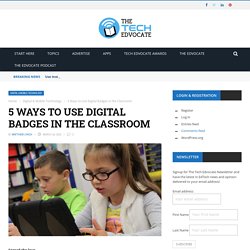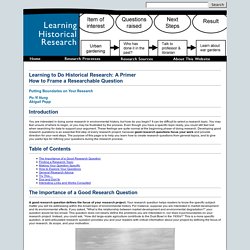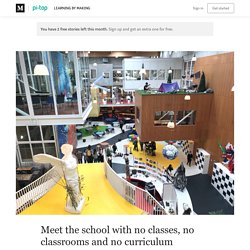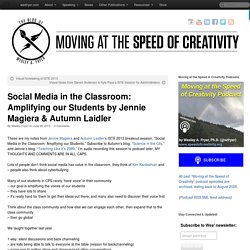

530 Information Search. What is Design Thinking? Design Thinking is a design methodology that provides a solution-based approach to solving problems. It’s extremely useful in tackling complex problems that are ill-defined or unknown, by understanding the human needs involved, by re-framing the problem in human-centric ways, by creating many ideas in brainstorming sessions, and by adopting a hands-on approach in prototyping and testing. Understanding these five stages of Design Thinking will empower anyone to apply the Design Thinking methods in order to solve complex problems that occur around us — in our companies, in our countries, and even on the scale of our planet. We will focus on the five-stage Design Thinking model proposed by the Hasso-Plattner Institute of Design at Stanford (d.school). d.school is the leading university when it comes to teaching Design Thinking. The five stages of Design Thinking, according to d.school, are as follows: Empathise, Define (the problem), Ideate, Prototype, and Test. 1. 2. 3. 4. 5.
5 Ways to Use Digital Badges in the Classroom. When you hear the word “badges,” you might think of the merit badges collected by Boy Scouts and Girl Scouts.

Similarly, digital badges award students for their achievements, skills, or other positive qualities. It might seem like a digital image of a badge won’t make much difference. But believe it or not, digital badges have the power to transform the way your students view learning and assessment. How? Here are five ways to use digital badges in your classroom: Recognize and Reward With digital badges, you can recognize your students’ accomplishments. As these students gain confidence and see the results of their efforts, you’ll likely notice improvement in both engagement and abilities. Motivate. Join Issuu – the All-In-One Content Creation & Distribution Platform.
5 Ways to Use Digital Badges in the Classroom. Asking Good Questions - Learning Historical Research. Putting Boundaries on Your Research Po-Yi Hung Abigail Popp You are interested in doing some research in environmental history, but how do you begin?

It can be difficult to select a research topic. You may feel unsure of where to begin, or you may be frustrated by the process. Even though you have a specific topic ready, you could still feel lost when searching for data to support your argument. A good research question defines the focus of your research project. Dust Bowl farmer driving tractor with young son near Cland, New Mexico Library of Congress, Digital IDfsa 8b32410 A research question can set boundaries to help you figure out where to go next. Meet the school with no classes, no classrooms and no curriculum. No year groups Students at Agora range from 12 to 18 (though there are no year groups) and each of them is given control over their own educational journey.

They are able to explore and learn about topics and things which interest them. I met students exploring subjects as diverse as German mountain guides, Mongolian horses, blacksmithing, Harry Potter patronuses, tables and skateboards. It is the job of the teacher – who here is called a coach – to challenge and guide that exploration process. What We Mean by Disability Culture. Social Media in the Classroom: Amplifying our Students by Jennie Magiera & Autumn Laidler. These are my notes from Jennie Magiera and Autumn Laidler‘s ISTE 2013 breakout session, “Social Media in the Classroom: Amplifying our Students.”

Subscribe to Autumn’s blog, “Science in the City,” and Jennie’s blog, “Teaching Like It’s 2999.” I’m audio recording this session to podcast later, MY THOUGHTS AND COMMENTS ARE IN ALL CAPS. Lots of people don’t think social media has value in the classroom, they think of Kim Kardashian and – people also think about cyberbullying Many of our students in CPS rarely ‘have voice’ in their community – our goal is amplifying the voices of our students – they have lots to share – it’s really hard for them to get their ideas out there, and many also need to discover their voice first Think about the class community and how else we can engage each other, then expand that to the class community – then go global We taught together last year.
RFU append interests survey2. Interest survey. Tools, Publications & Resources. Website Planning & Developing Your Website Blueprint. Digital Footprint Internet Safety Knowledge School PNG, Clipart, Advertising, Area, Brand, Computer, Digital Citizen Free PNG Download. 5 Quick Video Discussion Activities for Middle School. Give students the space to share their perspectives on digital citizenship topics.

If you're a middle school teacher, you know that positive social skills are just as important as academic skills for young adolescents. Add to that students' passion for interacting with others through their devices and online, and it's clear that digital citizenship skills like knowing how to deal with digital drama and keeping online friendships safe are essential for kids this age. But working digital citizenship lessons into an already-packed daily schedule can be a challenge for most teachers.
For Digital Citizenship Week 2019, we're highlighting our Teen Voices video series with these quick discussion activities you can use to kickstart your commitment to digital citizenship. These can fit into a short, 15-minute window of time -- be it planned or unplanned. Teen Voices: Presenting Yourself Online Students explore the benefits and drawbacks of presenting themselves in different ways online.
*Howard Rheingold - Net Smart: How to Thrive Online. 525 Knowledge Organization. 515 Emerging Literacy. YA Lit. Makerspaces. Web Tools. Book Talks. Trauma Informed Teaching. Digital Portfolios. SEL. Anti-racism-Culturally Responsive Teaching. Differentiation. Distance Teaching/Learning. Children's Lit. Librarian.